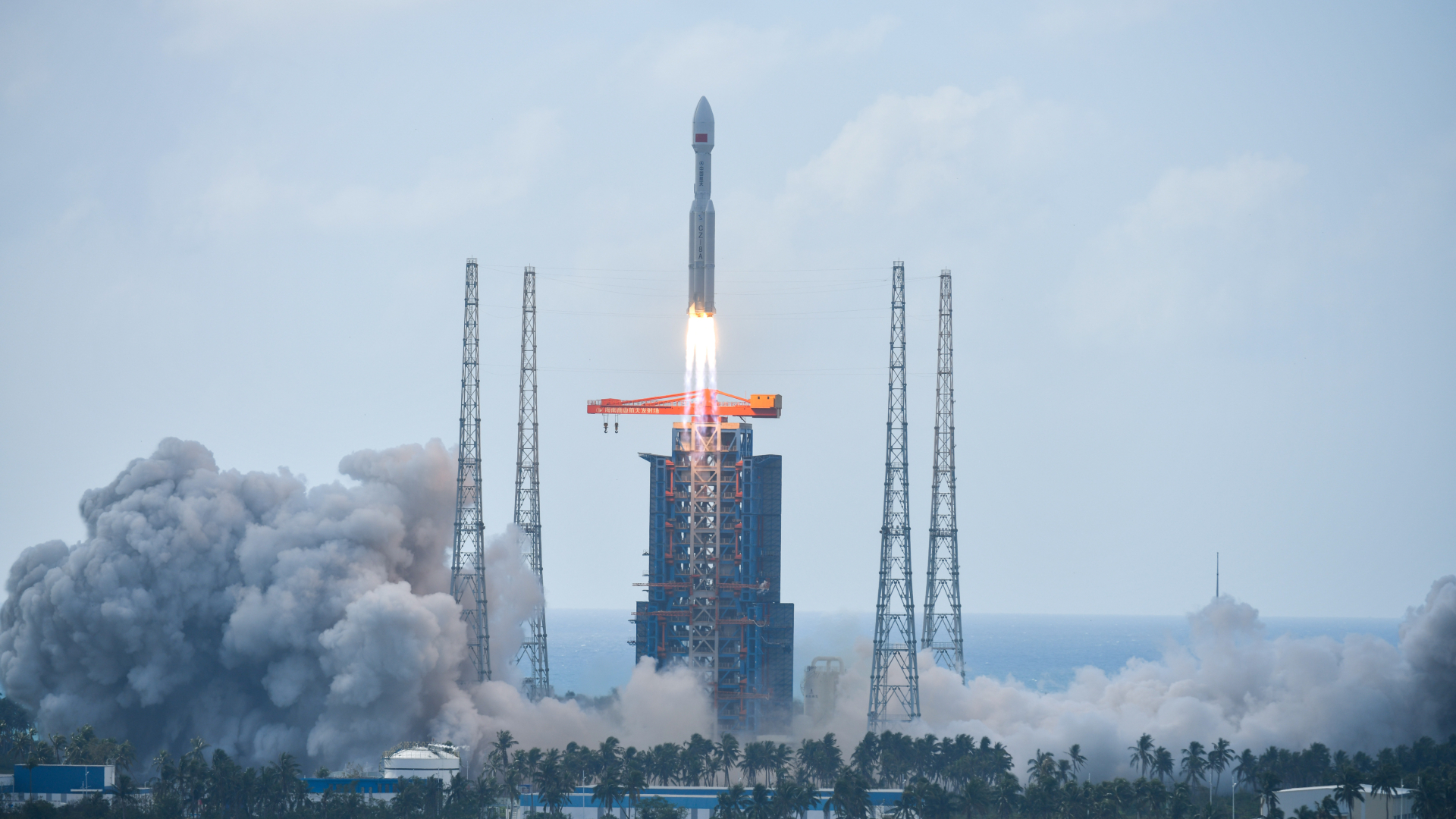China launches internet satellites on 600th mission of Long March rocket (video)
The Long March rocket family has been flying since 1970.
China's Long March rocket family now has 600 flights under its belt.
A Long March 8A lifted off on Wednesday (Oct. 15) from Wenchang Space Launch Center on the island of Hainan at 9:33 p.m. EDT (0133 GMT and 9:33 a.m. local time on Oct. 16).
The mission, which successfully lofted a batch of satellites for the Guowang broadband network, was the 600th ever for a Long March rocket.

The first Long March liftoff occurred on April 24, 1970, when a Long March 1 sent China's first satellite, called Dong Fang Hong 1, to orbit.
Over the ensuing 55 years, the nation has developed more than 20 different types of Long March rockets, 16 of which are active today, according to China Daily. And China's launch cadence has accelerated considerably over that span.
"It took 37 years for the Long March family to complete its first 100 launches," China Daily wrote on Thursday (Oct. 16). "The second 100 were achieved in 7.5 years. The third 100 launches took just over four years, the fourth 100 took two years and nine months, and the fifth 100 missions were completed in two years. The most recent 100 launches were accomplished in one year and 10 months."
The fleet's success rate overall is about 97%, the outlet added.
Breaking space news, the latest updates on rocket launches, skywatching events and more!
The Long March isn't the most-flown rocket family of all time; that distinction goes to the Soviet/Russian Soyuz line, which has completed more than 1,700 missions since debuting in November 1966.
The Soviet Union's Kosmos family and the American Atlas series have hit the 600 mark as well. And SpaceX's Falcon line, consisting of the Falcon 1 (which was retired in 2009), Falcon 9 and Falcon Heavy, will get there soon. Falcons have flown more than 570 times to date, and they're rocketing off the pad at unprecedented rates; SpaceX has already conducted 130 Falcon 9 launches so far this year alone.
Guowang ("national network") is a nascent broadband megaconstellation in low Earth orbit (LEO) that will be operated by the state-run company China Satnet. The network will eventually consist of about 13,000 satellites, if all goes to plan.
Wednesday's launch lofted the 12th group of Guowang satellites. Each batch is thought to consist of eight to 10 spacecraft.
Another Chinese internet constellation, called Qianfan ("Thousand Sails"), will have about the same number of spacecraft. Both networks are following in the footsteps of SpaceX's Starlink megaconstellation, which currently consists of more than 8,600 operational spacecraft and is growing all the time. (About 70% of this year's Falcon 9 launches have been Starlink missions.)

Michael Wall is a Senior Space Writer with Space.com and joined the team in 2010. He primarily covers exoplanets, spaceflight and military space, but has been known to dabble in the space art beat. His book about the search for alien life, "Out There," was published on Nov. 13, 2018. Before becoming a science writer, Michael worked as a herpetologist and wildlife biologist. He has a Ph.D. in evolutionary biology from the University of Sydney, Australia, a bachelor's degree from the University of Arizona, and a graduate certificate in science writing from the University of California, Santa Cruz. To find out what his latest project is, you can follow Michael on Twitter.
You must confirm your public display name before commenting
Please logout and then login again, you will then be prompted to enter your display name.
